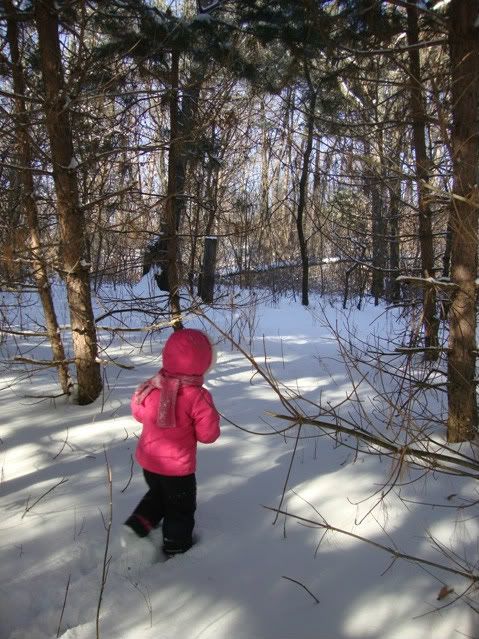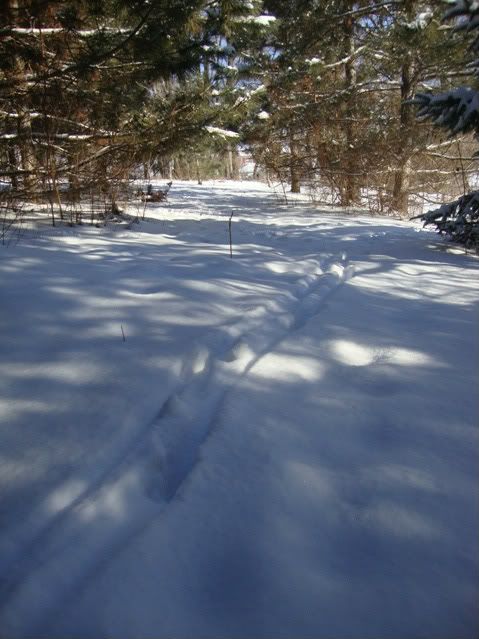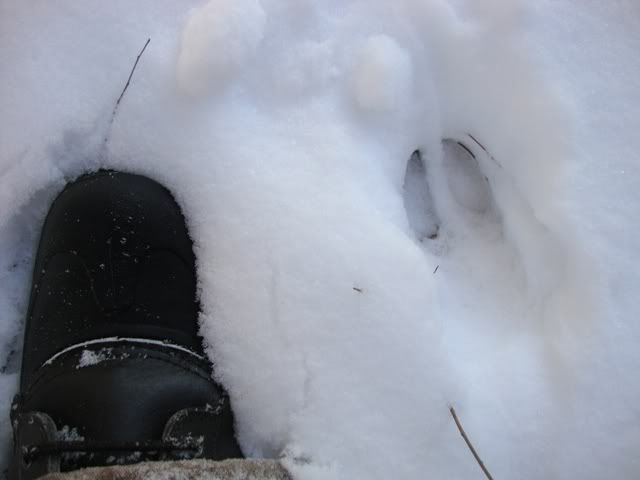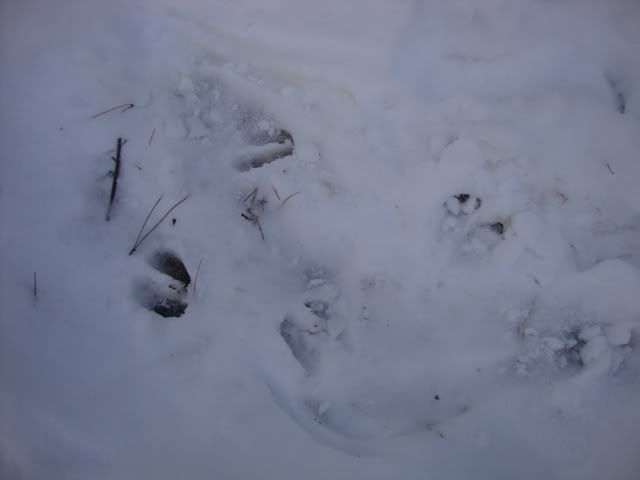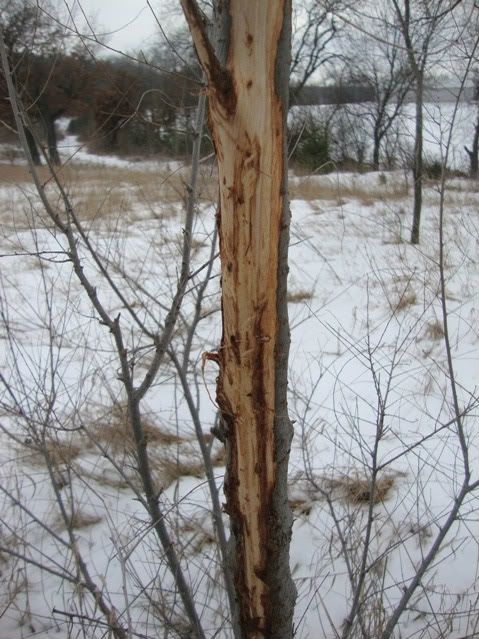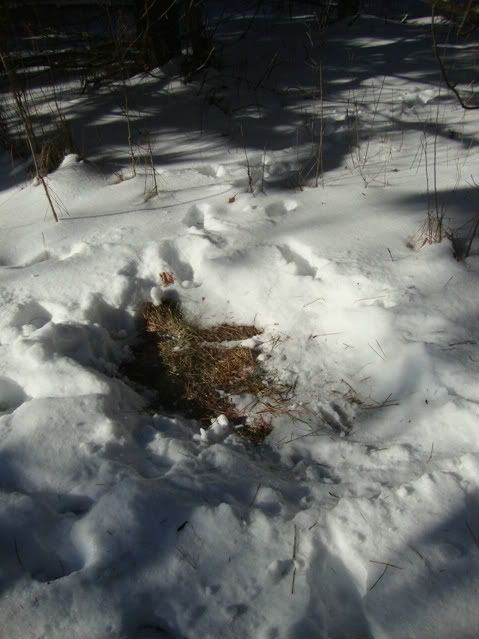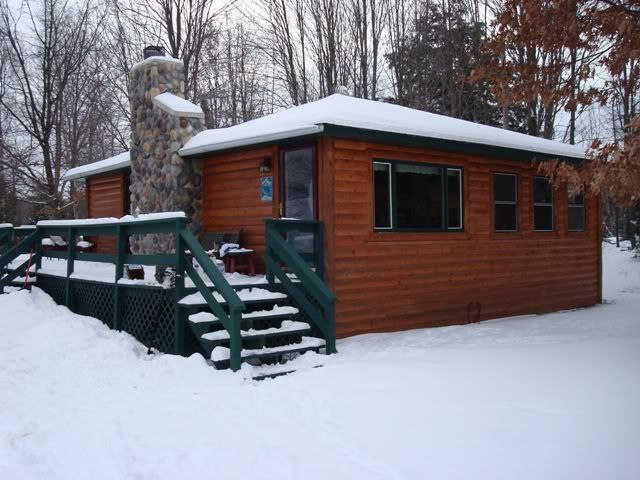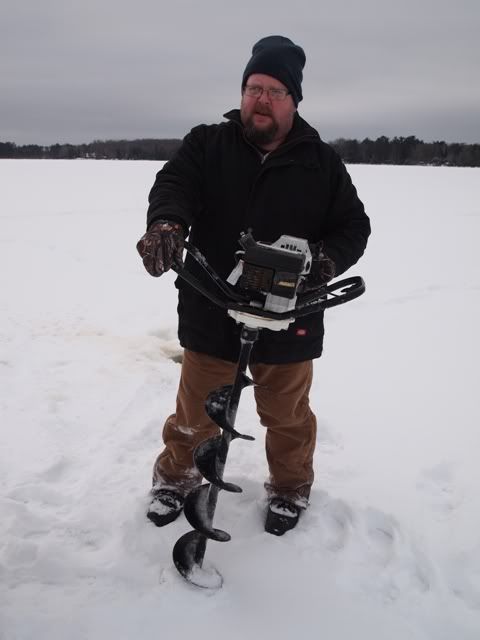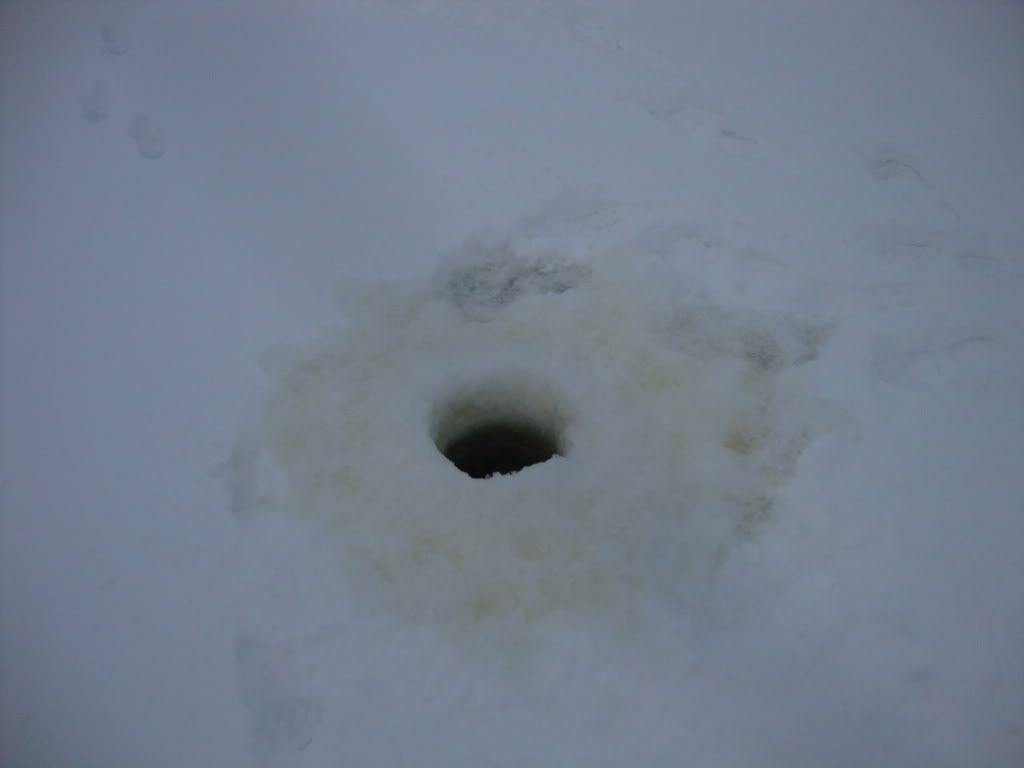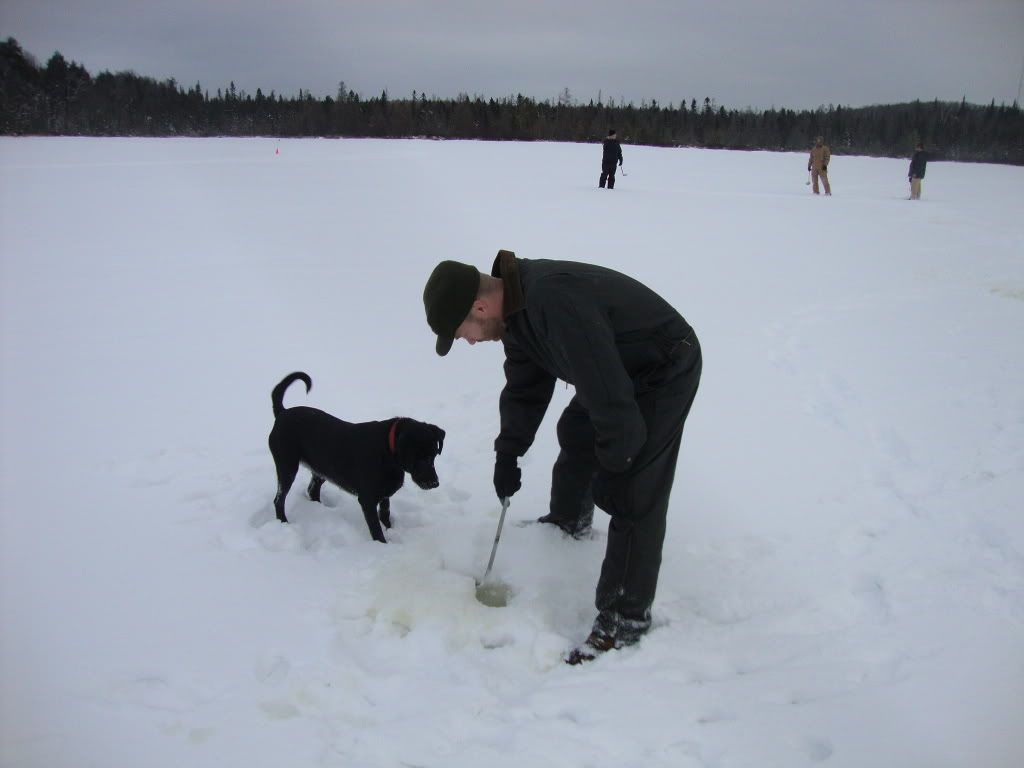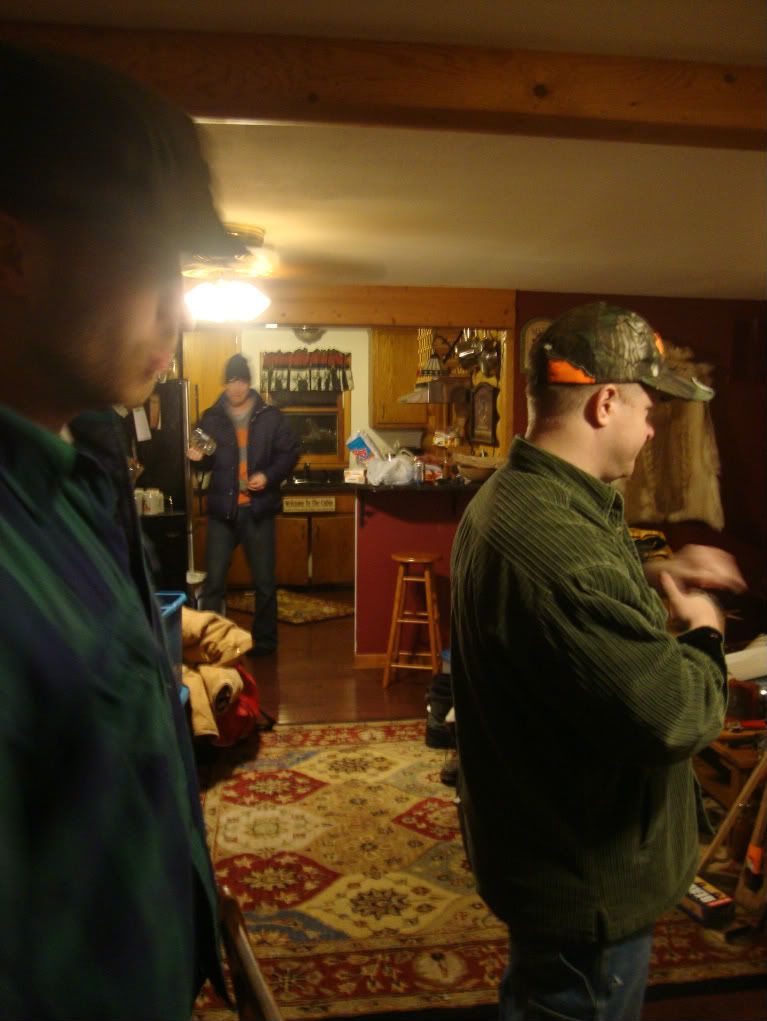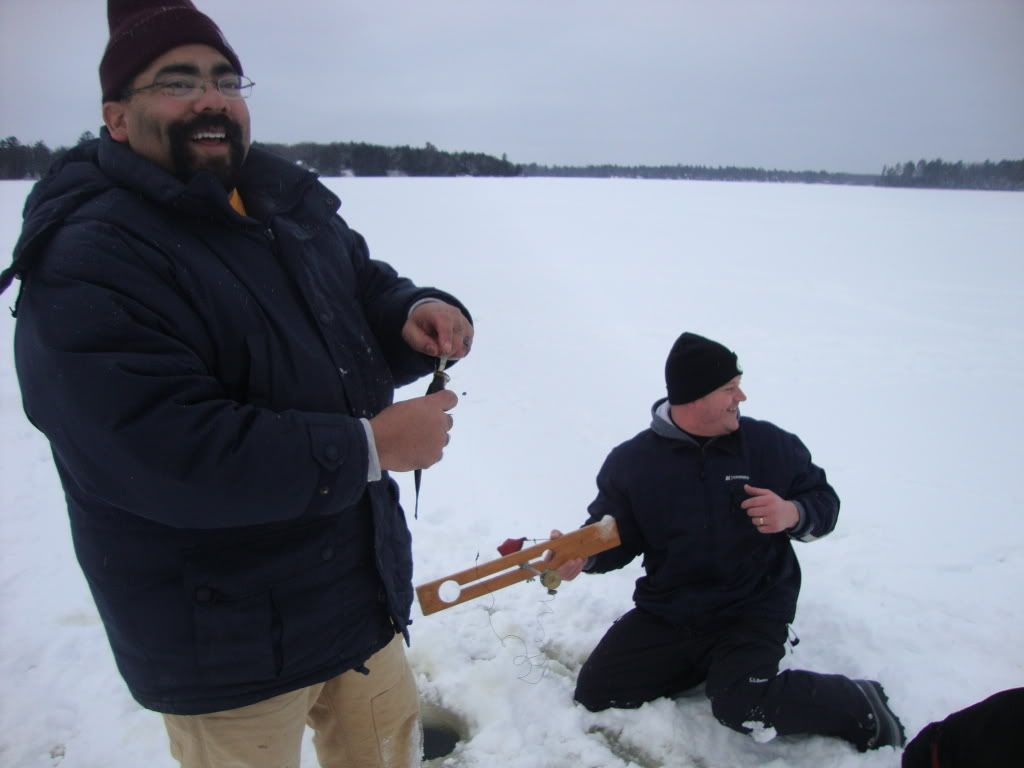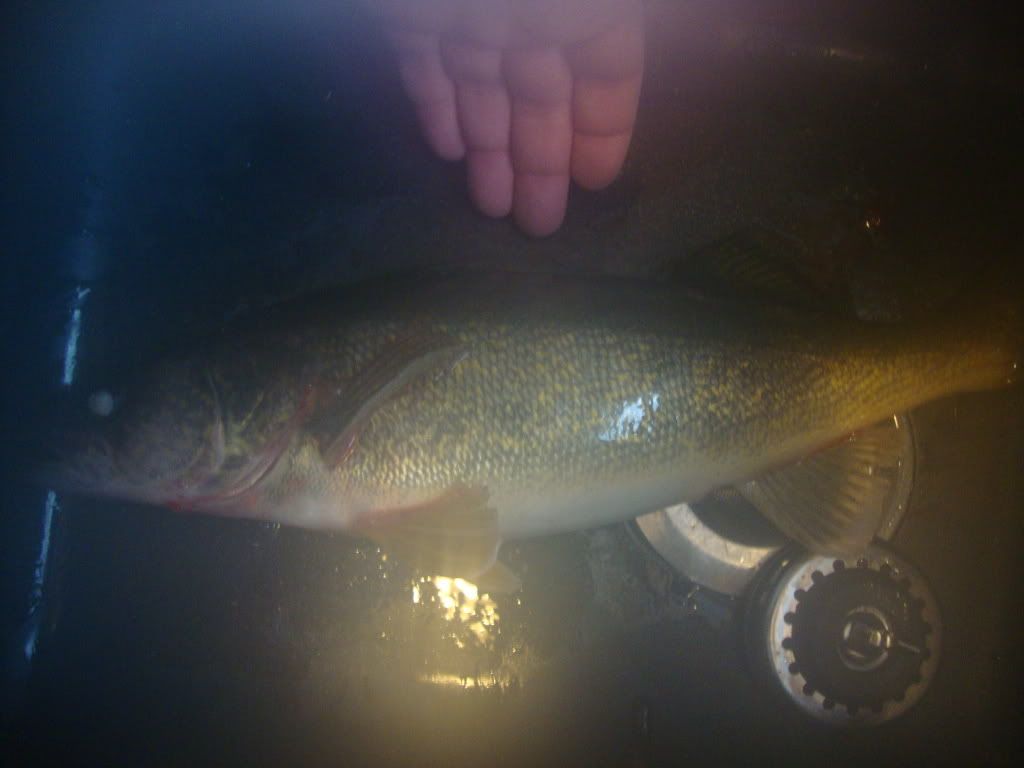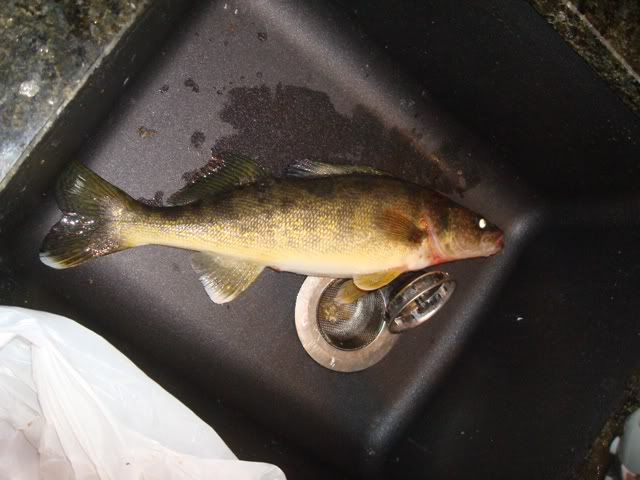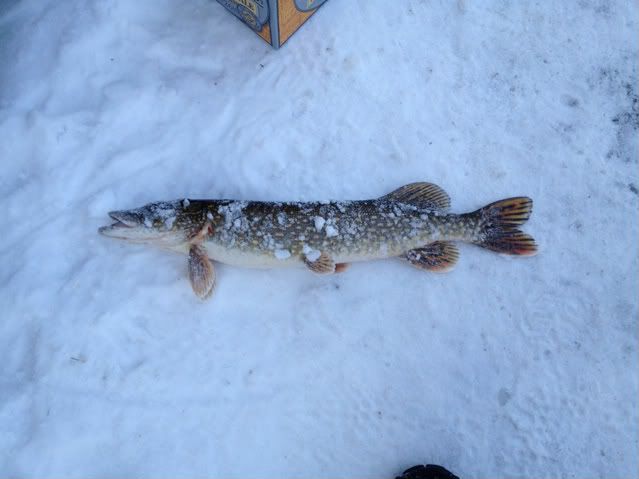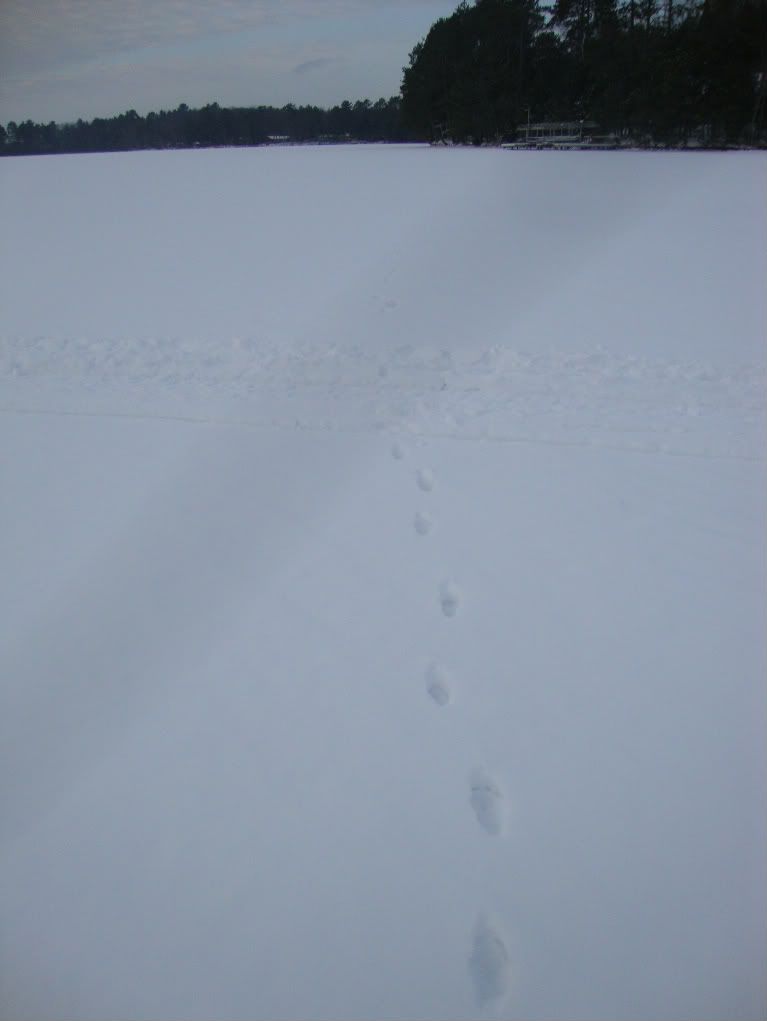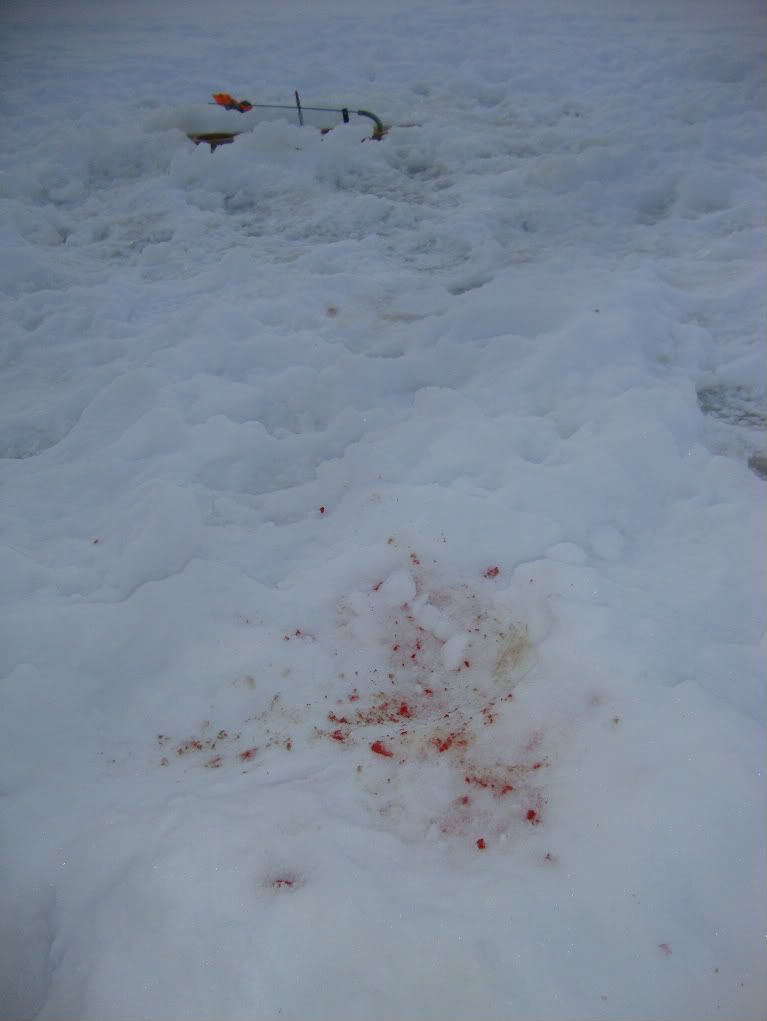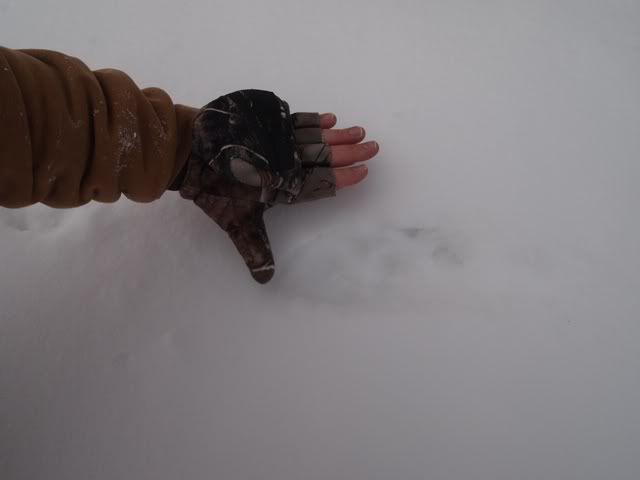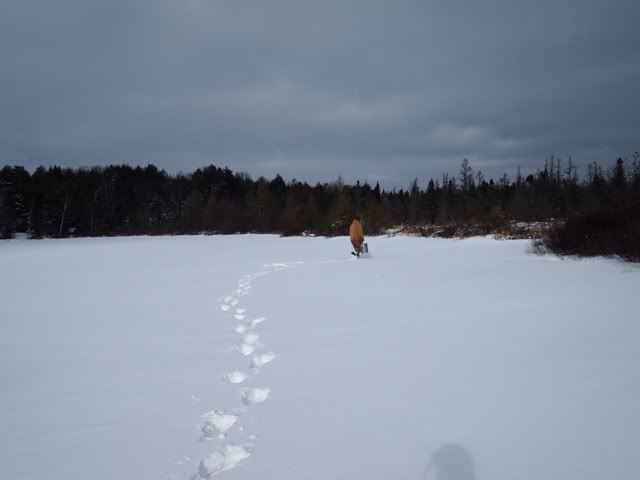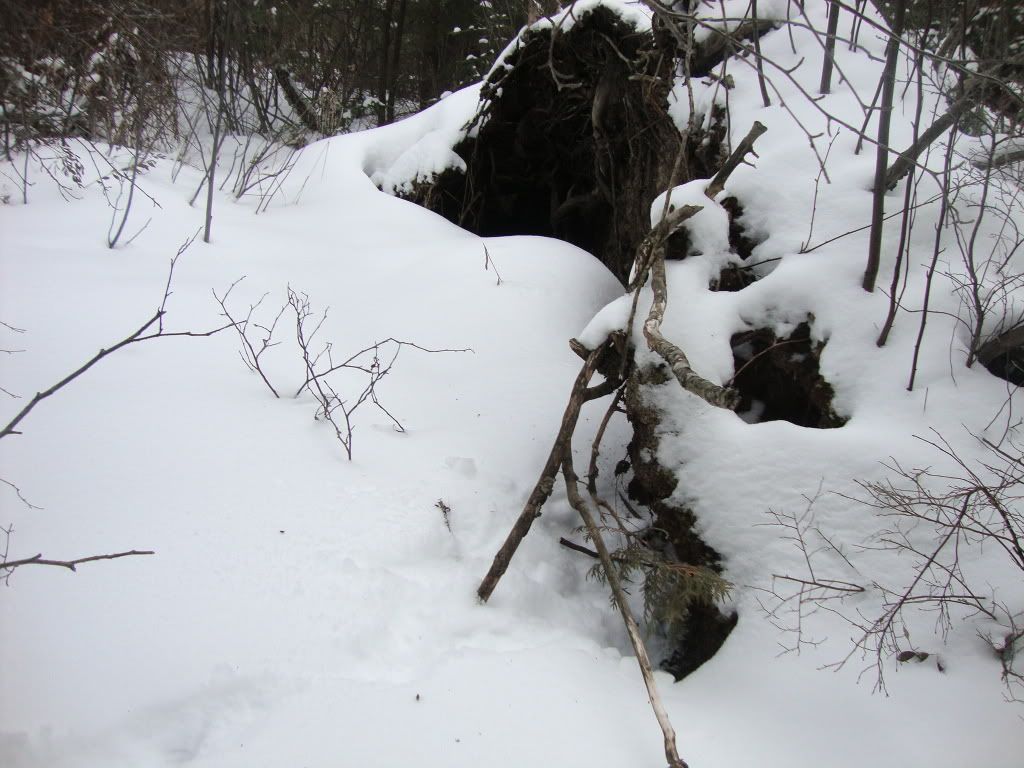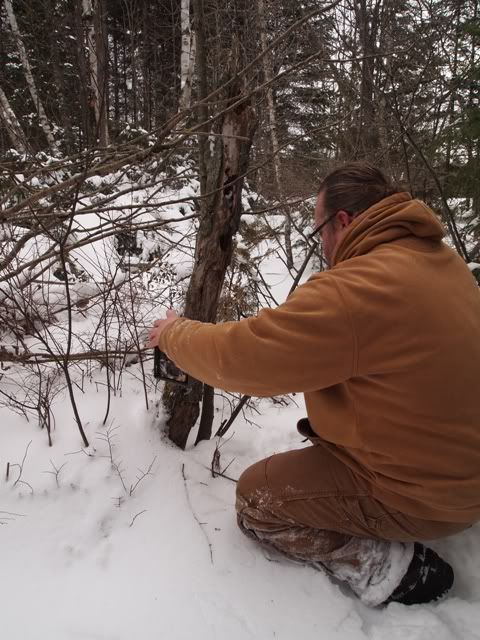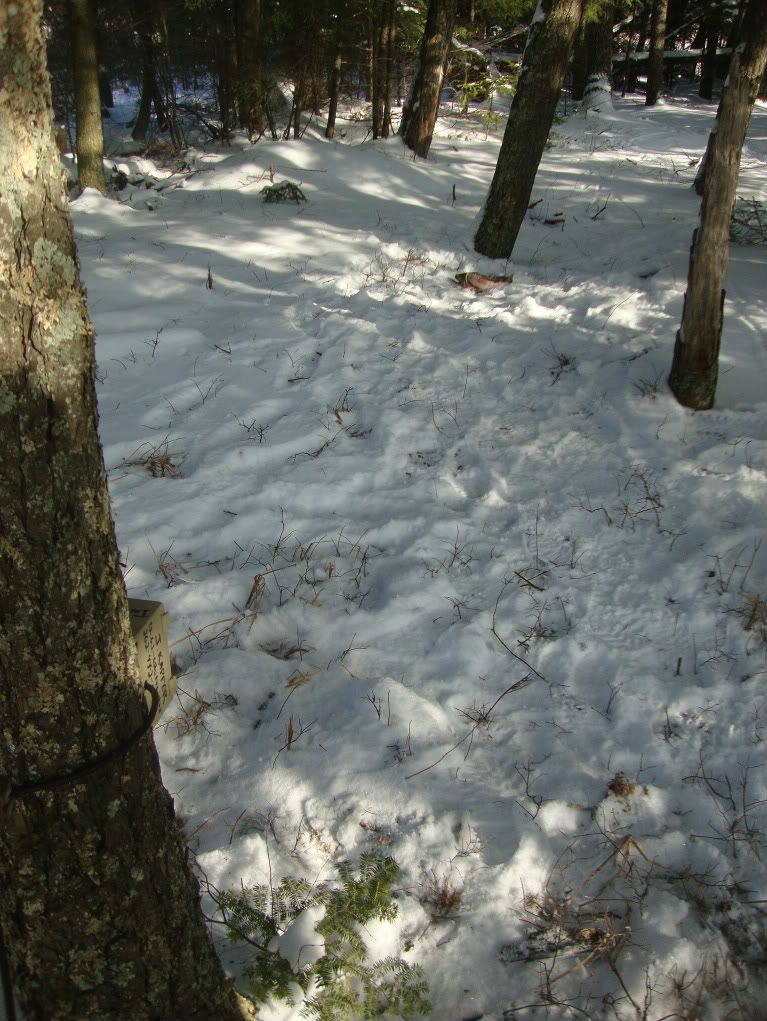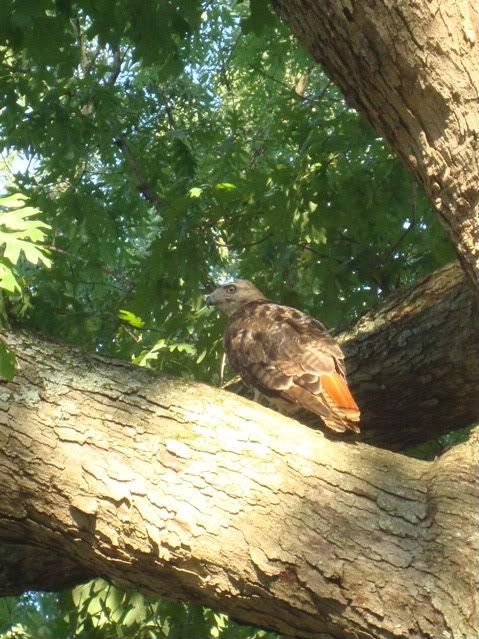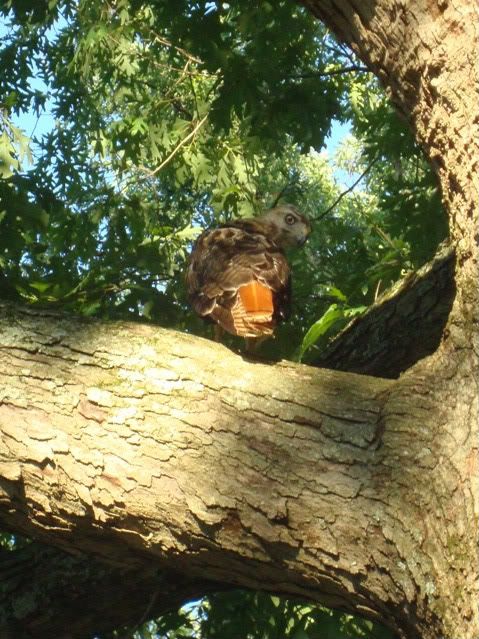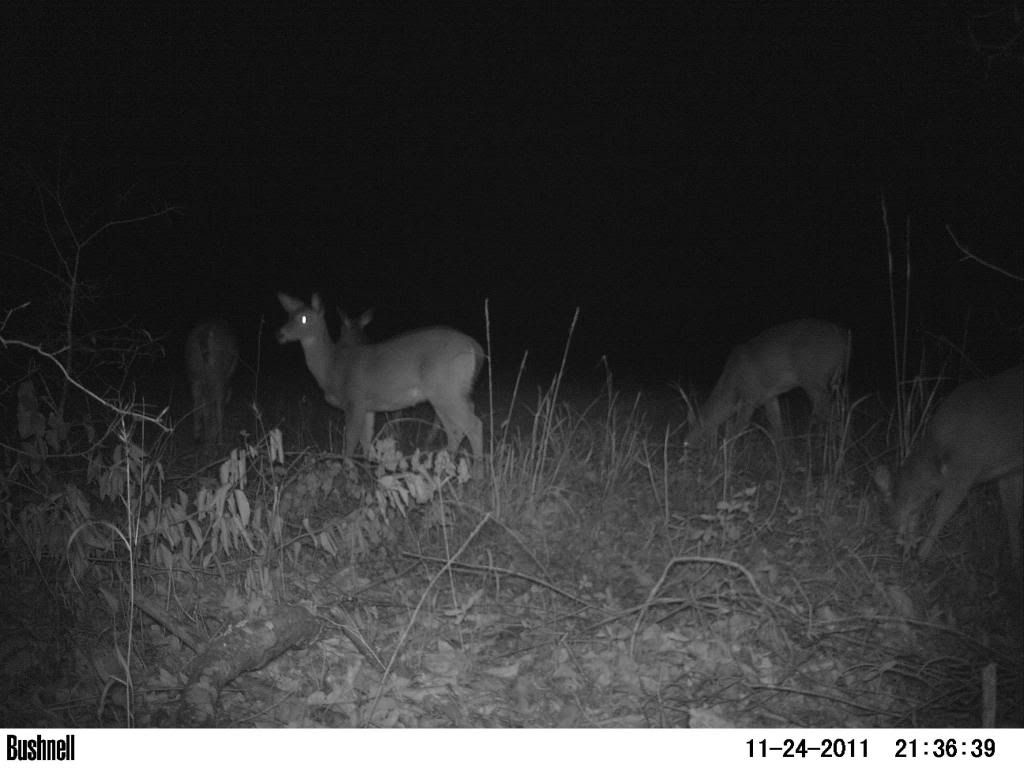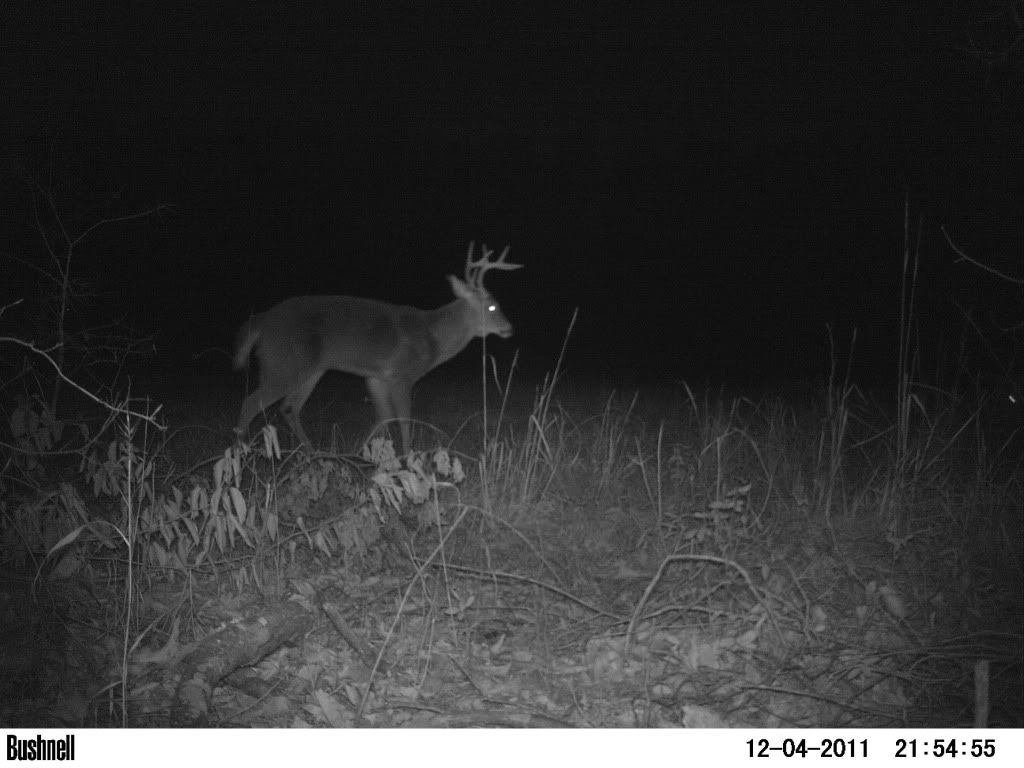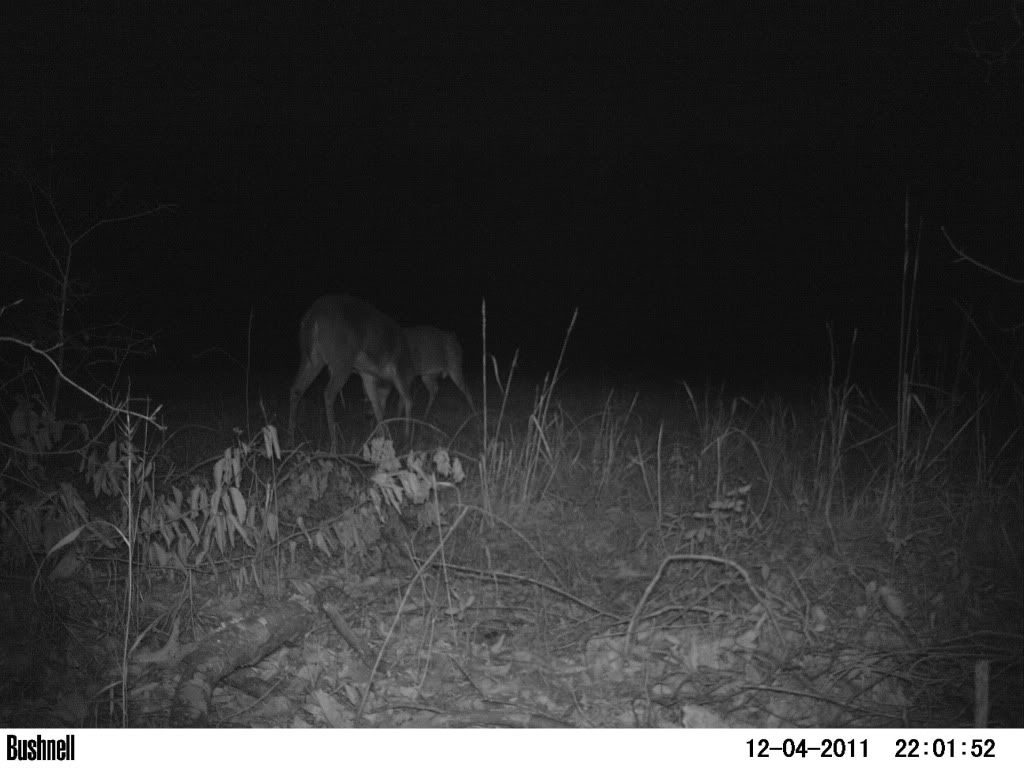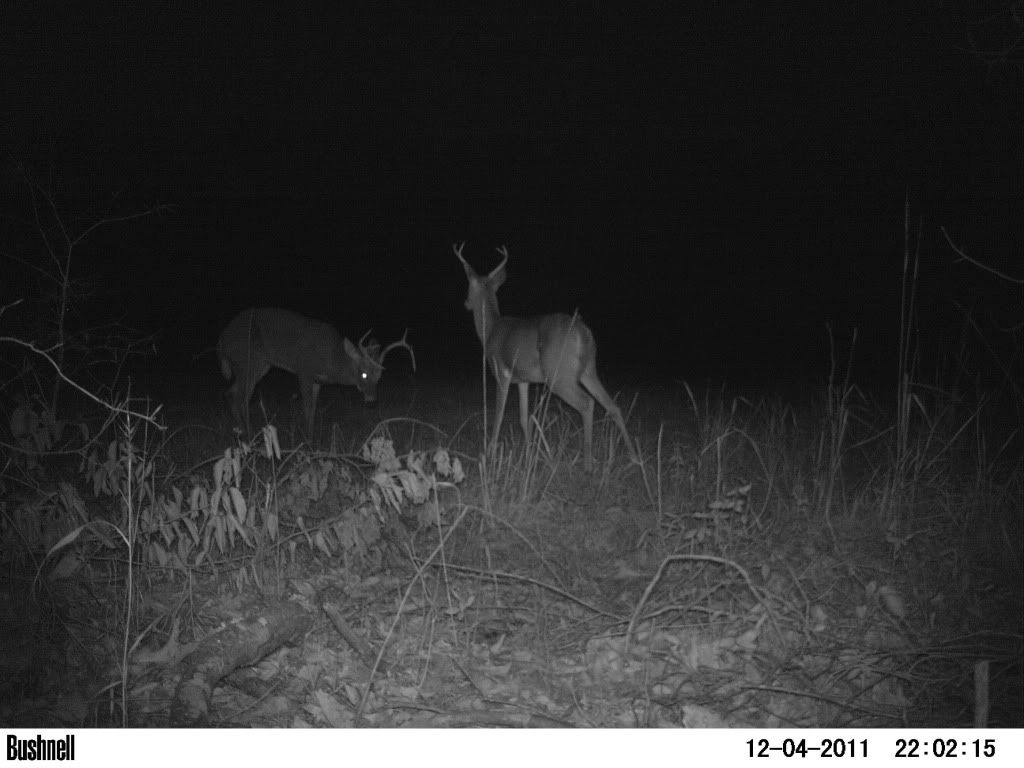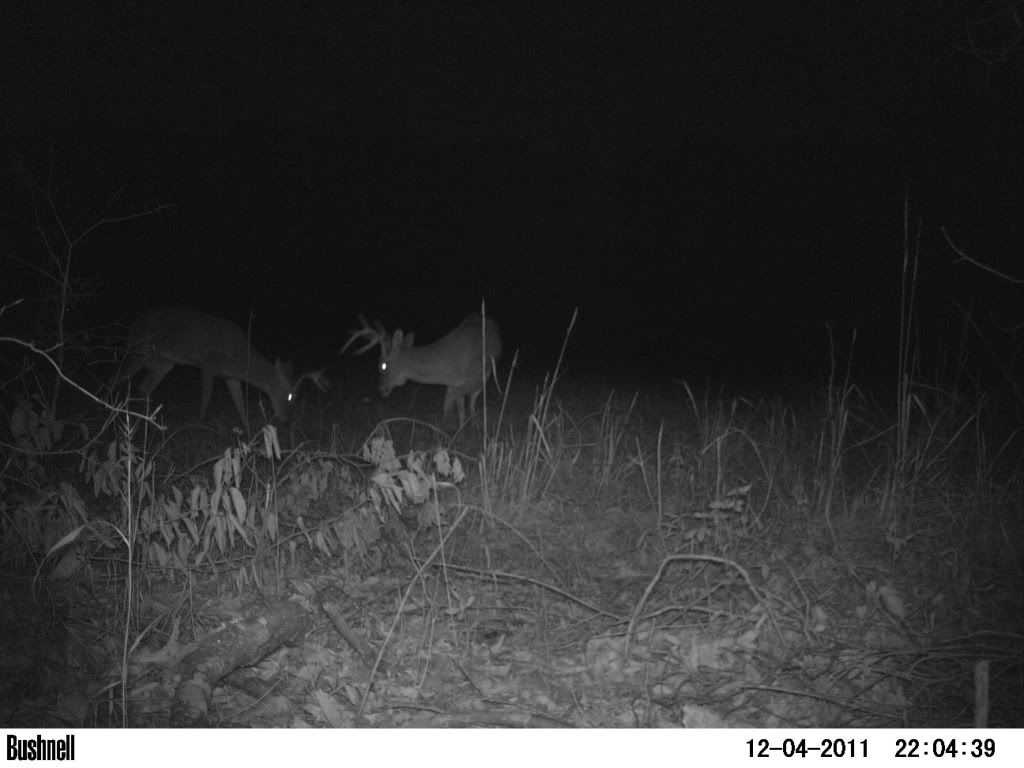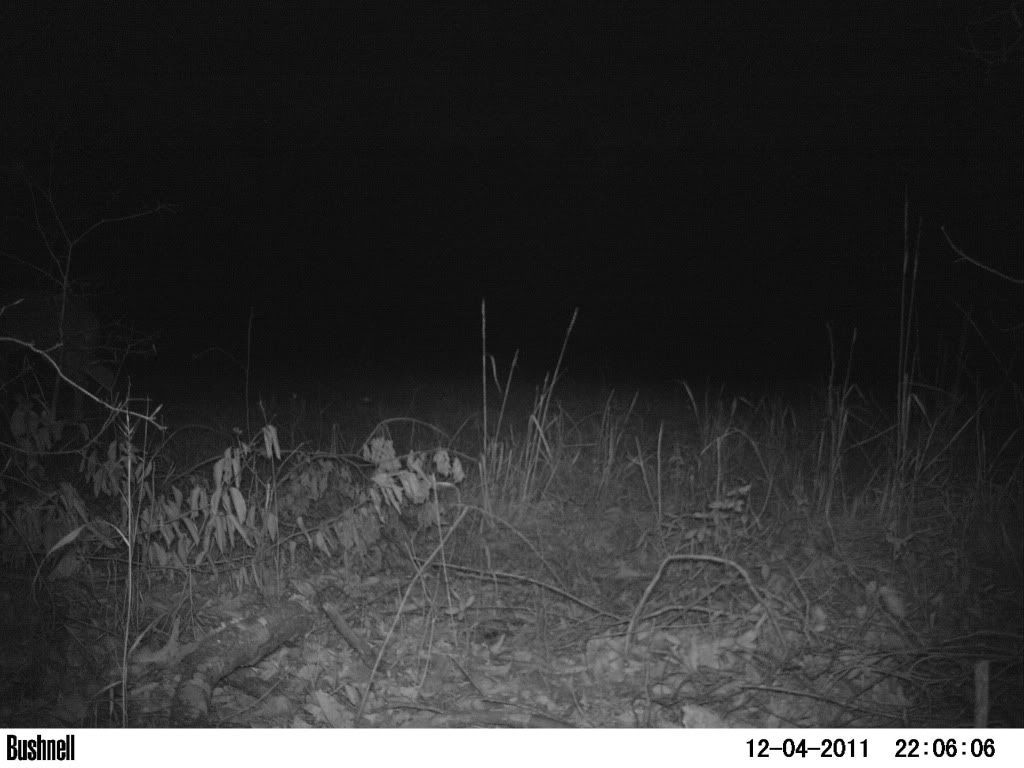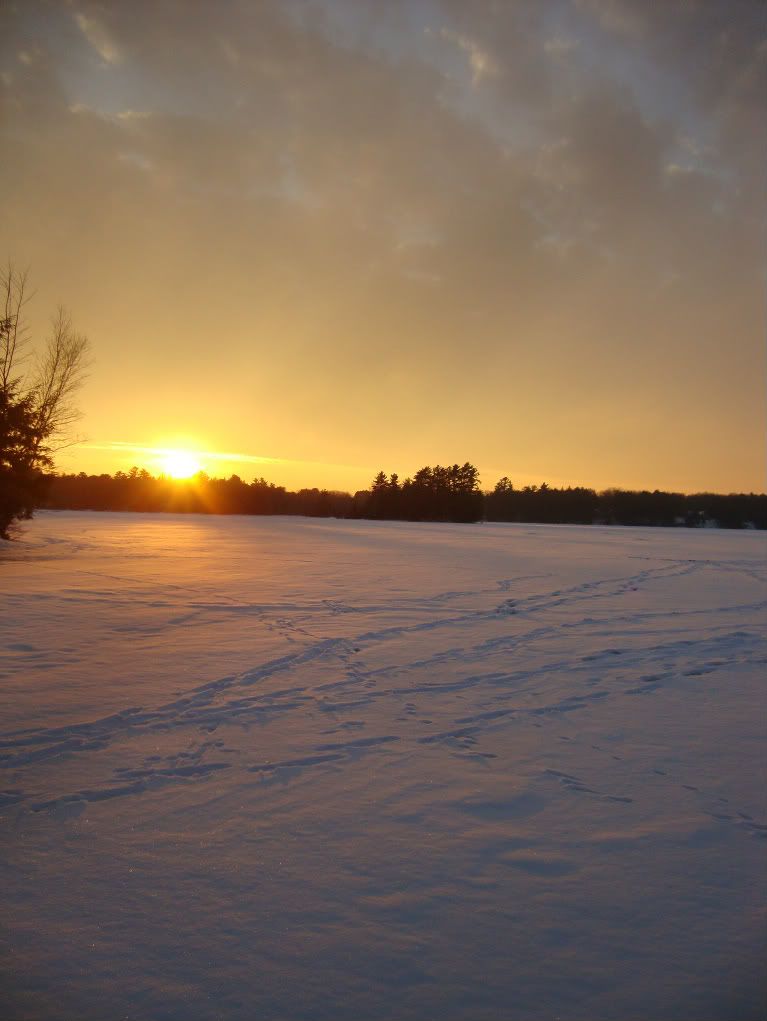
The key, in this case, is to have an annual ice-fishing trip with high school buddies in northern Wisconsin.
We've been taking this ice fishing trip since 2004 and it always falls on the same weekend (the weekend of Martin Luther King, Jr. Day). Fortunately for us, we have access to a cabin owned by the father of a friend of ours (Nate).
Usually a smallish group of individuals go along, and we exert alot of effort putting out and checking tip-ups (for those of you not familiar with a tip-up, stay tuned and I will explain). It's not all hard work, though. We also try to put forth considerable effort sitting in the cabin playing cards and reminiscing. Or maybe just enjoying the incredible crisp, cold weather that is normal of a January in Wisconsin.
So, anyways....we arrived on Friday evening and unloaded the gear, including the tip-ups. These are a fishing apparatus designed so that a spool of fishing line and a hook can be placed below the ice (see pics below). Bait is attached to the hook and when something strikes the bait, the spool moves, which causes a flag to pop up. Thus, a flag that has popped means you may have a fish.
The prep-work for ice fishing is substantial. First, you have to give all of your tip-ups a good once over (new line, hooks, sinkers, etc.). The evening that we arrived, Nate began the tedious process of preparing all of the tip-ups for deployment the next morning on the ice.
Above: Nate preparing the gear for early-morning deployment
Early the next morning, we got dressed and trudged our mountains of gear out onto the ice. To fish through the ice, one obviously needs to make a hole. This is done with an auger and we were fortunate enough to have a gas-powered auger available to speed up the process (there was roughly a foot of ice to contend with in most cases).
Because of all the hard-work required, it's okay to take a break from time to time. It's supposed to be an enjoyable experience, afterall!
Above: Justin and Chad show us how to relax on the ice while deploying tip-ups.
The result is a nice hole for your tip-up to rest on.
Once the holes are popped, any ice/snow that falls in must be scooped out.
Next, the tip-up gets carefully placed over the hole in the ice.....
Of course, it's always helpful to have a nice fire nearby to warm your chilled bones......
...or perhaps a cabin to step into for lunch and a drink....
If you're lucky, all of the hard work pays off and you get to have fresh fish for dinner....
Above: Nate and Andy give a lesson in how to haul in the big one through the ice.
Above two pictures: A pair of Walley (Sander=Stizostedion vitreum) caught on tip-ups
Above: Northern Pike (Esox lucius) is another species we commonly catch on this lake
______________________________________________________________________
There's also usually a treasure-chest of tracking opportunities thanks to the snow. There had been a nice snow-fall the night before we arrived, so I found a number of fresh tracks and trails to follow. The snow was alittle deep, however, and good photos were hard to come by. In the past, I've seen gray wolf (
Canis lupus) tracks near the cabin. None this time, however. Yet, the usual cast of characters could be found: White-tailed Deer (
Odocoileus virginianus), Squirrel (based on size, I'm assuming eastern Gray Squirrel;
Sciurus carolinensis), and Eastern Cottontail (
Sylvilagus floridanus).
Fox (I'm assuming Red Fox;
Vulpes vulpes) were also present and always fun to track. On more than one occasion, we crossed the trail of an individual who wandered across the ice on both sides of the peninsula. This one moved with a purpose and took advantage of trails in the snow left by folks on snow-mobiles.
Something also stopped by and made a meal of a bait minnow someone dropped on the ice.
This could have been done by a bird, such as a crow. The spattering of frozen blood almost seems unlikely for a fox, which I would assume would chew this up and swallow quickly. A crow would hack away at a frozen minnow, making the scene above. However, we never noticed any crows on the ice near our tip-ups. It's possible that a fox chomping a frozen minnow would have spattered a bit of blood on the snow.....especially if that minnow was frozen to the snow and the fox and to work to get it out.
Just not 100% positive....At any length, the remains of the macerated minnow were right next to the fox trail I found.
More evidence of wildlife activity below. The drillings of a woodpecker and based on the size, I'd say it was a Pileated Woodpecker (
Dryocopus pileatus). We saw them fly overhead on two separate mornings and they are incredible critters.
Another one I'm not 100% positive on.....an example of a raised-leg urination (or RLU) from a canid. This was along the road near the cabin. The tracks associated with this were fairly large and looked like a domestic dog, but I couldn't be certain. Unfortunately, this individual didn't make it past our road-side camera trap (see below).
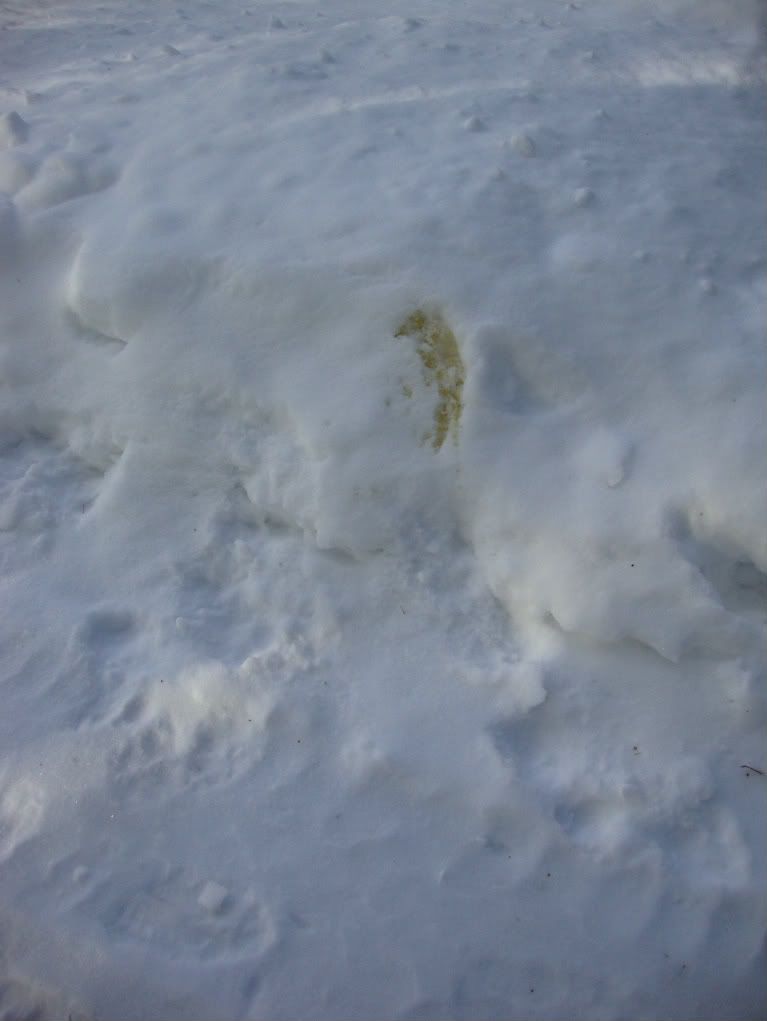
There were also a few large Canid tracks on the ice. They measured around 3.5 inches from tip of the nails to the back of the inter-digital pad. They followed the edge of the lake, investigating the shoreline, and at first I was excited that they might be wolf tracks. It was hard to see the details of the print in the deep fluffy snow, but they didn't jump out as domestic dog. The top pictture below doesn't show details well, but you can at least see the general size of the tracks. It's almost a double-register (i.e., the hind foot just about registers directly on top of the front foot). Yet, it's not quite a double-register so the track looks a tad longer in the picture than it really is. The bottom picture (with the tape measure) gives a better relation to size and detail.
We followed the trail for a while, but eventually ran into some fresh human tracks running parallel to the Canid tracks......probably a domestic dog and it's owner. Big dog, though!
________________________________________________________________________
Of course, while I was there...I decided to throw out some camera traps and have alittle fun. The cabin we were using was on a peninsula, so there was limited human activity in the surrounding area, and the threat of theft was reduced. I figured it would be easy to put a few cams out with less rigid security measures in place. I also knew from the wildlife activity I had observed in the past, there was the possibility for some neat pictures. However, time was working against me....... the cameras could only be out for 2-3 nights. I was hopeful, but also realistic. I also decided to help the process along, if possible. I'm not one to put alot of bait out in front of my cameras, but in this case I pulled out all of the stops due to the short time-frame.
Above: a bog that borders the lake we fished on is a great place to find evidence of wildlife
We had found several trails that appeared very much like that of a weasel. They made the classic "dumbell"-shaped 2-2 pattern that
Rezendez and
Halfpenny talk about in their tracking books. They also appeared to wander back and forth, checking every possible nook and cranny for food. For some reason, I never took a picture of the trails....but they prompted me to set up a baited camera trap.
The trail lead to the root system of a blown-over tree, and it came in and out of this root system several times. Looked like a good place to put up a camera to me.
Above: the root system burrow that I saw the apparent weasel tracks enter.
Above: hanging the camera next to the root system.
The view from the camera is below...the blown over tree is to the right just out of view. You can see the small pile of bait minnows...... I also put a dab of commercial trapper lure for weasels on a stick poking out of the snow just left of the bait pile.
The weasel I was hoping for never showed, unfortunately. Instead, I got pictures of an Eastern Cottontail......
....and two visits by a Red Squirrel (Tamiasciurus hudsonicus).
Although it wasn't a weasel....the Red Squirrel is a species I've never camera trapped before. It's more of a northern species, preferring coniferous and mixed forests and isn't found in the more southern locale I currently live in. It is one of five tree squirrels in the area. The others being the Eastern Gray Squirrel (
Sciurus carolinensis), the Fox Squirrel (
Sciurus niger), the Northern Flying Squirrel (
Glaucomys sabrinus) and the Southern Flying Squirrel (
Glaucomys volans).
The Red is a cute little critter, coming in at only 11-14 inches long (including it's 4-6 inch tail) and weighing 7-10 oz..
Our second camera location (below) was selected based on evidence of past activity, and it's protected nature. It was on an island we hiked out over the ice to reach. A series of deer trails passed right through the middle of the island, which was covered by a small grove of evergreens and no understory vegetation. It was obvious that critters used the spot as a little oasis when crossing the large area of open ice, where they were very exposed. In past years, I had also seen weasel tracks on this island, and was again hoping for pictures of one of the little mustelids (which always seem to elude my cameras!).
So, we put down some more bait (minnows and some fish guts)...and I put a few drops of liquid smoke on the tree that the camera faced.
I've had good luck with liquid smoke in the past, and I hoped it would draw something in.
Above: having help in the field makes all the difference! You can see Justin above helping me make my camera adjustments before securing it to the tree.
Unfortunately, open ice is also good for something else....snowmobiles. On at least two nights I heard them zipping around on the ice and it sounded like they were very near the island. Not much of a chance that any critters would venture out there on a night when the snow mobiles were cruising nearby.
As a result, this camera produced nothing.
The last camera was a road-side camera (below). I had noticed the roads were the highest areas of wildlife activity during our past ice fishing trips (easier than pushing through the deep snow). This is a dirt road that is little traveled, since the cabin is on a peninsula. So....hoping for wolf photos....I used alittle commercial wolf urine in front of this camera as an attractant. I knew this might actually scare off anything else, but I REALLY wanted some wolf photos.
But...alas....no wolves showed themselves.
Apparently, however, fresh wolf urine isn't a big deterrent for Eastern Cottontails :)
And, thus, ended our 2012 ice fishing trip. Although the camera traps were a disappointment, a great time was had by all and I can't wait to get back next year!
